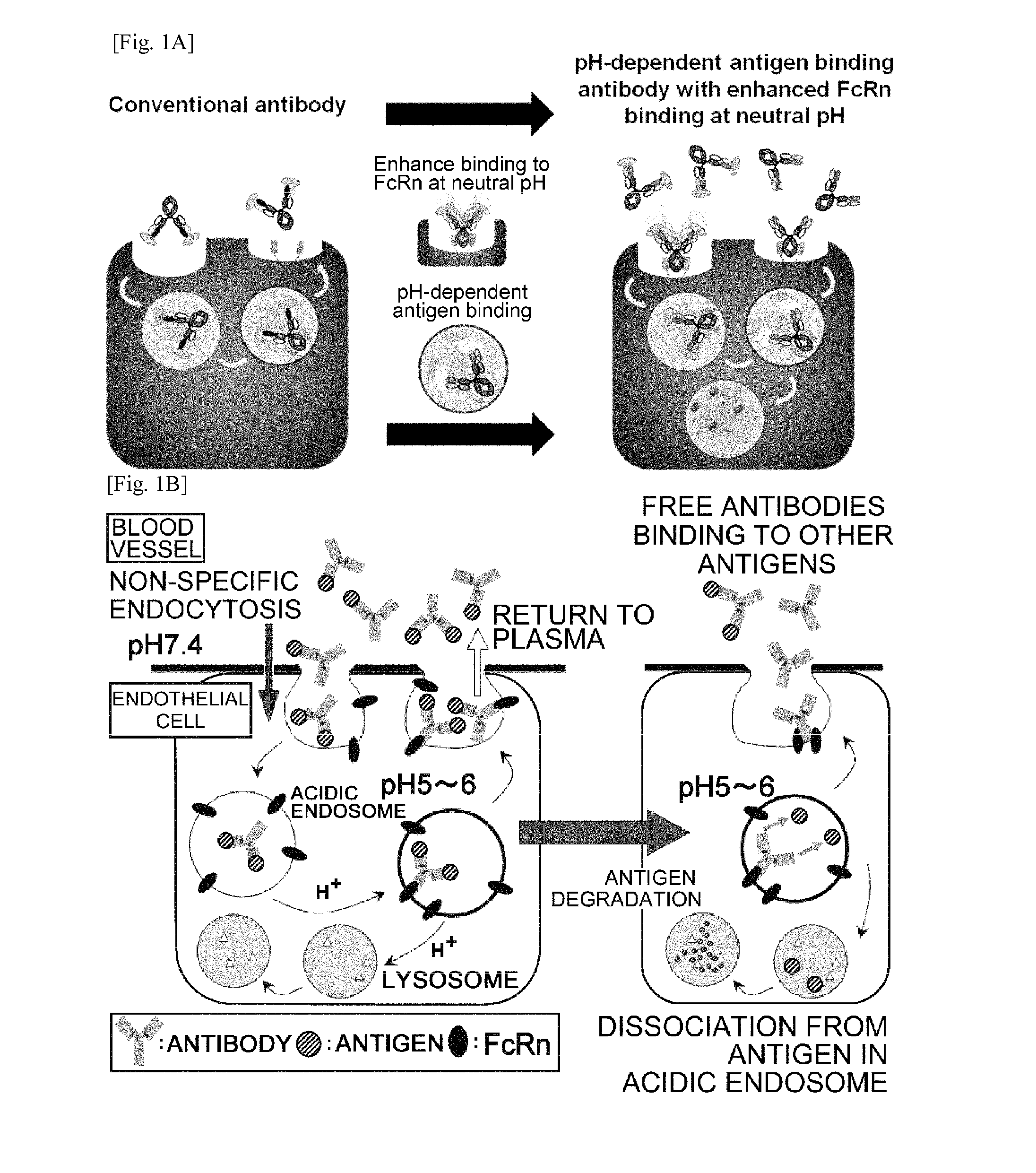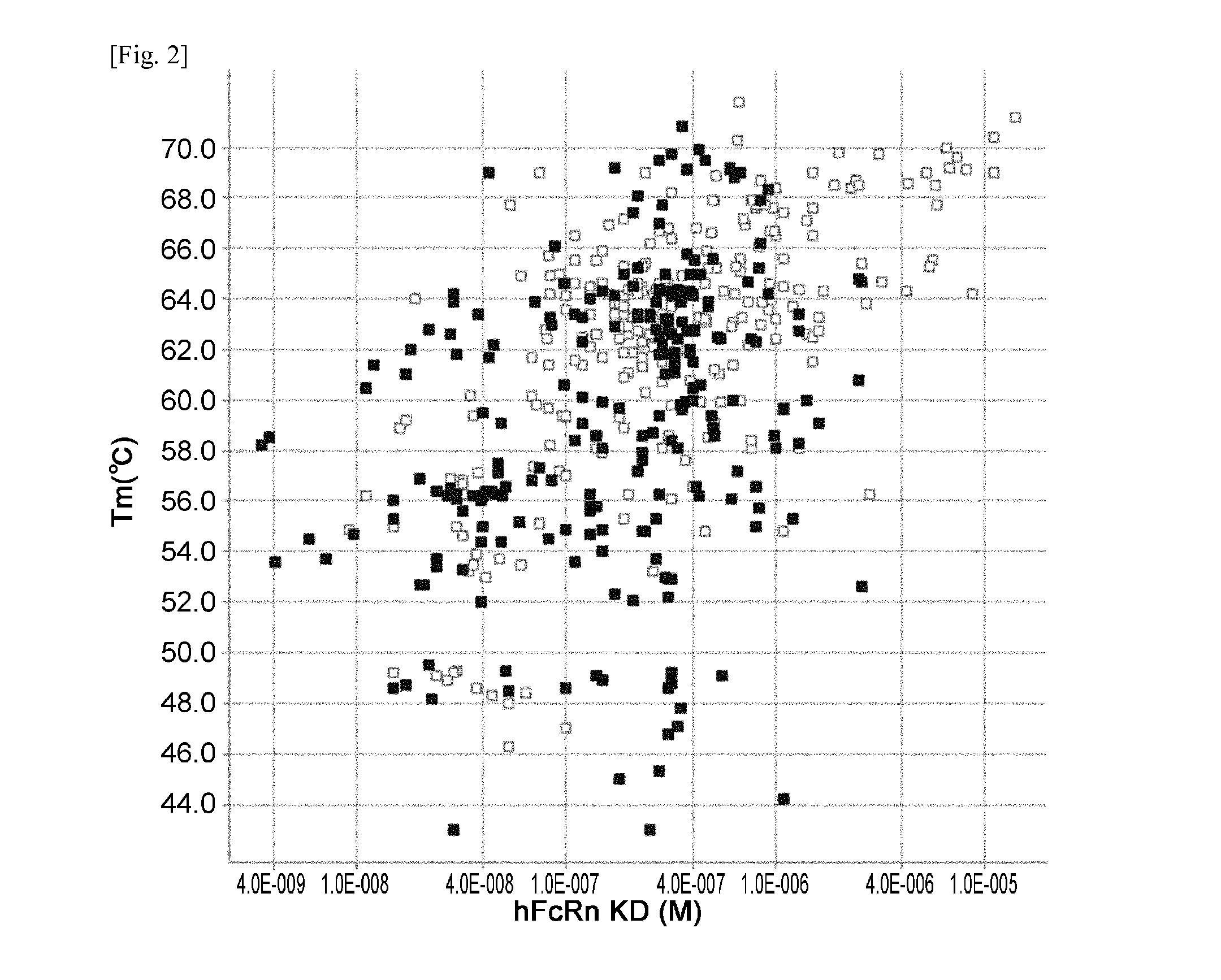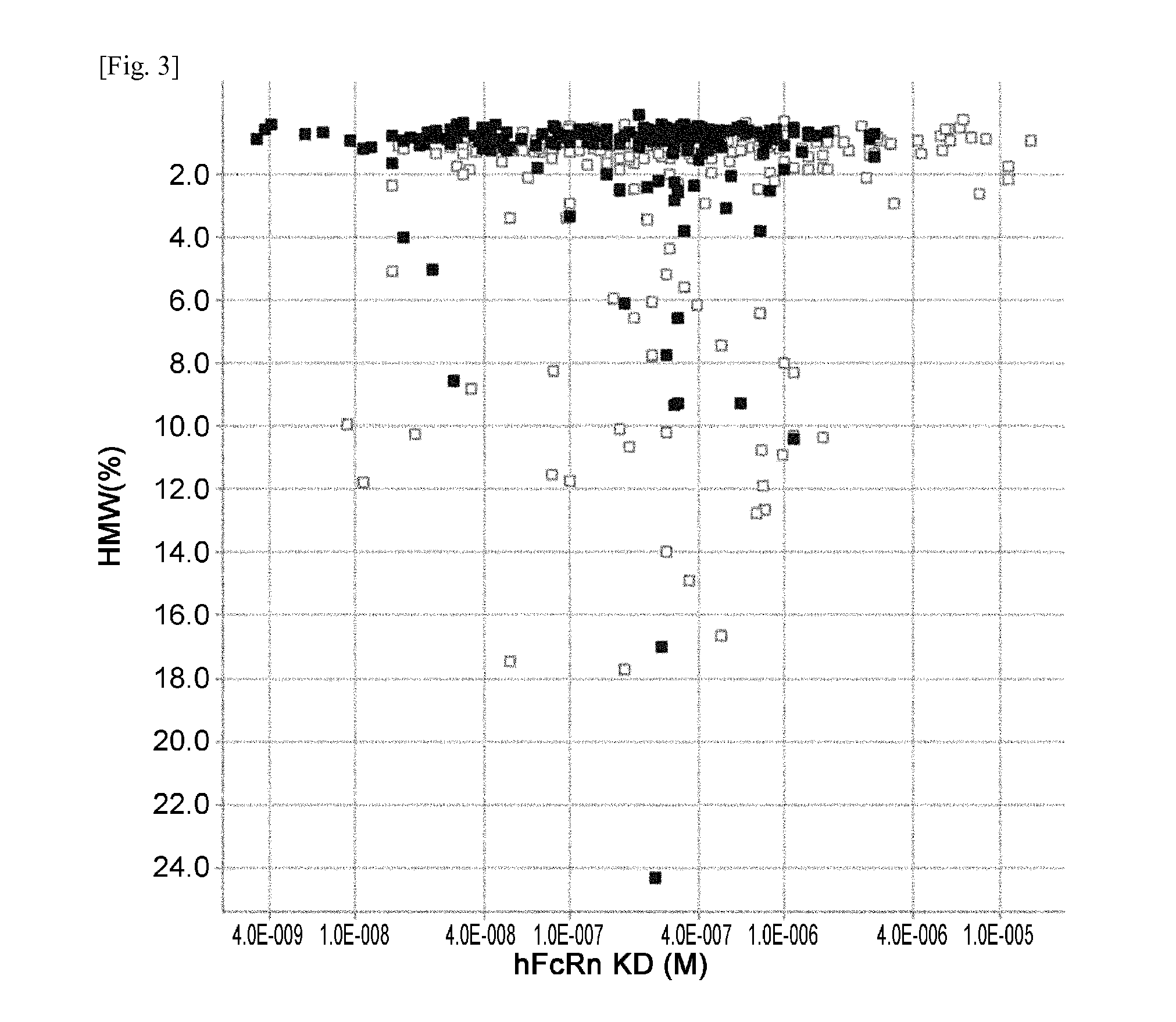THERAPEUTIC ANTIGEN-BINDING MOLECULE WITH A FcRn-BINDING DOMAIN THAT PROMOTES ANTIGEN CLEARANCE
a technology of antigen binding and therapeutic antigen, which is applied in the direction of antibody medical ingredients, immunological disorders, pharmaceutical active ingredients, etc., can solve the problems of substitutions and the risk of altering the properties of antibodies, and achieve enhanced affinity for fcrn, low immunogenicity, and high stability
- Summary
- Abstract
- Description
- Claims
- Application Information
AI Technical Summary
Benefits of technology
Problems solved by technology
Method used
Image
Examples
example 1
Construction of New Neutral pH FcRn Binding Affinity Improved Fc Variants
[0488]Fc regions of the antigen-binding molecule (antibody) which interacts with FcRn (Nat Rev Immunol. 2007 September; 7(9):715-25) were engineered to have an improved binding affinity to FcRn at neutral pH in order to enhance the antigen elimination from plasma. The mechanism of antigen elimination from plasma by pH-dependent antigen binding antibody with improved binding affinity to FcRn at neutral pH in comparison to the conventional antibody is shown in FIG. 1A.
[0489]The Examples 1-17 of WO2011 / 122011 disclose mutations (amino acid substitutions) that improve the binding affinity to FcRn at neutral pH and describes Fc variants F1 to F599 (Table 16) that were generated with the focus on improving the binding affinity to FcRn at neutral pH of antibodies. However, for the pharmaceutical development of antibodies comprising such Fc variants, not only their pharmacological property (i.e improved FcRn binding) b...
example 2
Identification FcRn Binding Improved Fc Variants with High Stability, Low High Molecular Weight Species and Low Immunogenicity Risk
[0501]2-1. Analysis of Previous and New Fc Variants by Plotting Tm, HMW (%) and Immunogenicity Score Against hFcRn Binding Affinity
[0502]hFcRn binding affinity and Tm of previous Fc variants (F1-F599) described in Example 1 of WO2011 / 122011 and new Fc variants (F600-F1052) generated and evaluated in Example 1 were plotted and are shown in FIG. 2. hFcRn binding affinity and HMW (%) of previous and new Fc variants were plotted and are shown in FIG. 3. hFcRn binding affinity and immunogenicity score of Fc variants F1-F599 and new Fc variants (F600-F1052) were plotted and are shown in FIG. 4.
[0503]The new Fc variants (F600-F1052) and previous Fc variants (F1-F599) variants having Ser239Lys or Asp270Phe mutation were deleted from the plots. Since Ser239Lys and Asp270Phe mutation improved the stability (Tm) while it did not improve FcRn binding affinity and re...
example 3
In Vivo Antigen Elimination Study of New Fc Variants in Human IL-6 Receptor Steady-State Infusion Model Using Human FcRn Transgenic
3-1. Preparation of Antibodies for In Vivo Study
[0526]pH-dependent anti-human IL6 receptor IgG1 antibody, Fv-4-IgG1 comprising VH3-IgG1 (SEQ ID NO: 1) and VL3-CK (SEQ ID NO: 3), previous Fc variant Fv-4-F11 comprising VH3-F11 (SEQ ID NO: 4) and VL3-CK (SEQ ID NO: 3), new Fc variants, Fv-4-F652 comprising VH3-F652 (SEQ ID NO: 5) and VL3-CK (SEQ ID NO: 3), and Fv-4-F890 comprising VH3-F890 (SEQ ID NO: 6) and VL3-CK (SEQ ID NO: 3), and Fv-4-F946 comprising VH3-F946 (SEQ ID NO: 7) and VL3-CK (SEQ ID NO: 3) were expressed and purified by the method known to those skilled in the art described in Reference Example 2 of WO2011 / 122011.
[0527]In vivo antigen elimination study of Fv-4-IgG1, Fv-4-F11, Fv-4-F652, Fv-4-F890 and Fv-4-F946 were performed in human IL-6 receptor steady-state infusion model using human FcRn transgenic.
3-2. In Vivo Study of Antibodies by Ste...
PUM
| Property | Measurement | Unit |
|---|---|---|
| pH | aaaaa | aaaaa |
| Tm | aaaaa | aaaaa |
| Tm | aaaaa | aaaaa |
Abstract
Description
Claims
Application Information
 Login to View More
Login to View More - R&D
- Intellectual Property
- Life Sciences
- Materials
- Tech Scout
- Unparalleled Data Quality
- Higher Quality Content
- 60% Fewer Hallucinations
Browse by: Latest US Patents, China's latest patents, Technical Efficacy Thesaurus, Application Domain, Technology Topic, Popular Technical Reports.
© 2025 PatSnap. All rights reserved.Legal|Privacy policy|Modern Slavery Act Transparency Statement|Sitemap|About US| Contact US: help@patsnap.com



